5 Major Ports in Bahrain
The island nation of Bahrain lies near the western coastline of the Arabian Gulf. Comprising 50 natural and 33 manmade island clusters, it ranks as the third smallest country in the Asian continent. However, it also counts among the most developed Asian economies.
Petroleum products comprise more than 60% of its exports and account for 10% of its GDP. Tourism is also a key sector bringing valuable foreign exchange and was the worst hit due to covid-19.
Also, government policies combined with a strong commercial shipping sector have boosted economic growth, making Bahrain one of the fastest growing and freest economies in the world.
Prosperity has also resulted from the developed transportation and communications sector and a stable banking and finance sector. Hence, Bahrain attracts significant foreign investment and is home to numerous multinational firms due to the ease of doing business.
Among the Gulf countries, Bahrain has the quickest transit time between its ports, airports and logistics centre thus enabling faster transportation of trade commodities.
Apart from processed petroleum products, aluminium goods and construction materials are the other major export commodities. Imports comprise chemicals and crude petroleum transported via underground pipelines from neighbouring Saudi Arabia.
However, the country is dependent on the world for meeting its nutritional requirements. Almost all food, including cereals, grains, fruits and meat are imported as the nation has little cultivable land. Though the economy is diverse it is imbued with problems such as unemployment among the youth and depletion of groundwater and oil resources.
The major trade partners of the Kingdom of Bahrain include Saudi Arabia, UAE, the US, Oman, China and Australia. Bahrain’s maritime trade is conducted through the following major ports.
Port of Mina Salman
The seaport Mina Salman is the country’s main commercial port facility, housing the department of customs clearance in its premises. Located in Manama, the capital of Bahrain and an industrial and manufacturing hub, the port is the point of entry of more than half of the nation’s imports and handles most of its exports. Almost 80% of the cargo handled is containerised. It is also called the old Manama port since most maritime traffic is now being diverted to the new port of Khalifa Bin Salman.
More than 3200 ships carrying approximately 2,39,700 TEU and 4.7 tonnes of general cargo are handled at Mina Salman Port every year. It was a natural harbour before the establishment of the port in 1962 with an annual handling capacity of more than 2.5 million tonnes.
The port’s history goes back to 5000 years and it was used as a trading post by the Dilmun civilisation, followed by Arabs in the 7th century. The Age of Exploration in the 15th and 16th centuries led the Portuguese to this harbour which went to the Persians in the 1600s. Since the late 17th century, Manama and the port have been controlled by the Al Khalifah kingdom.
In the mid-90s the major port activities were fishing, pearl collecting and construction of small boats. The navigation channel was narrow and larger vessels could not be accommodated. But with the discovery of oil in the 1930s, Manama and the port began to be developed as the heart of the Kingdom’s commercial, financial and trading centre.
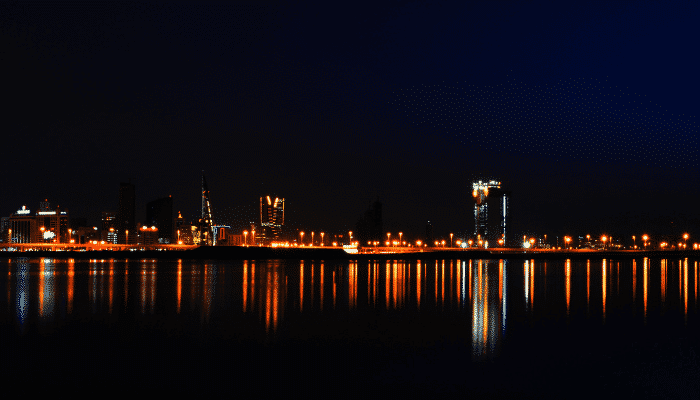
The port’s construction began in the mid-1950s with the addition of numerous wharves, port equipment and storage facilities, making it a crucial port in the Gulf region capable of accommodating the biggest ships. In the 1980s the port underwent further expansion and modernisation.
Presently the port boasts a dock spanning 800 m, comprising 10 berthing facilities for handling general cargo. Three berths were recently constructed to handle the increasing bulk cargoes. All berths have been dredged to depths of approximately 11 m.
The Container terminal was opened in 1979 and includes 15 container berths each covering 200 m, capable of accommodating ships weighing up to 70,000 DWT. The storage area covers 400,000 sq m for storing up to 10,000 TEU and an additional 200,000 sq m of the open storage yard. Cold storage and 320 reefer connections are also offered.
The port has designated storage space enclosing a 175,000 sq m open storage space and a 125,000 sq m sheltered storage area comprising 10 warehouses. The cargo handling area near the main pier spans more than 50,000 sq m.
Port of Khalifa Bin Salman
The Khalifa Bin Salman Port is a major seaport of Bahrain located on the island of Hidd northeast of the main archipelago. It became operational in 2009 and is privately operated by the famous port operating company, APM terminals and is supervised by the Ports and Maritime Affairs department of the country’s government. The port was recently expanded and is envisaged to be a premier transhipment hub of the northern Arabian gulf region.
Its strategic geographical location amidst the major maritime trade routes in the Arabian gulf coupled with the deep waters and wider navigation channels makes it one of the most accessible and busy facilities of the region. The port is linked with Bahrain’s major cities through roadways and is in close proximity to the international airport of Bahrain. It is also well-connected with Saudi Arabia via the King Fahad Causeway.
Since it is located in the industrial region of Hidd housing many manufacturing plants, it exports aluminium and petroleum goods. A power plant and a water desalinisation plant are also located near the port. One of the most modern and highly efficient facilities at par with global port standards, it houses offices of the world’s major shipping companies.

The port covers more than 100 hectares and has an annual container handling capacity of around 2.5 million TEUs. Apart from container goods, it also handles bulk and breakbulk, general cargo, ro-ro and passenger vessels. The cruise berth is one of the most beautiful, decked with the latest technologies and amenities to boost tourism on the island, also known for water sports like scuba diving, snorkelling, pearl diving and fishing. Sea crabs and fish are handled at one of the berths dedicated to small fishing boats.
The port includes a wharf spanning 1800 m with numerous berths and a container handling facility covering 900 m2 endowed with 4 shore cranes, capable of accommodating the biggest container ships. The container terminal also comprises a multipurpose wharf to handle excess container traffic.
The port is constructed on reclaimed land and has enough land space for the construction of additional 5 berths. There are plans regarding the same including increasing port equipment by buying 13 more cranes and forklifts to increase the port’s capacity to 3 million TEU in the next 5 decades.
Al Manama Harbour
Also known as the Bahrain harbour, this is not a port or cargo handling facility but a commercial project on the northern coastline of the capital Manama. Spanning over 38 hectares, the buildings were constructed on the reclaimed land comprising the old dock of the city.
The construction began in 2003 and the 2 harbour towers were completed by 2007, having more than 50 floors and occupied by major private players and also government departments such as the Ministry of Social Development and Tourism etc. Another significant building is the harbour Gate that comprises the country’s stock exchange while the Commerical Park houses many international investment firms.
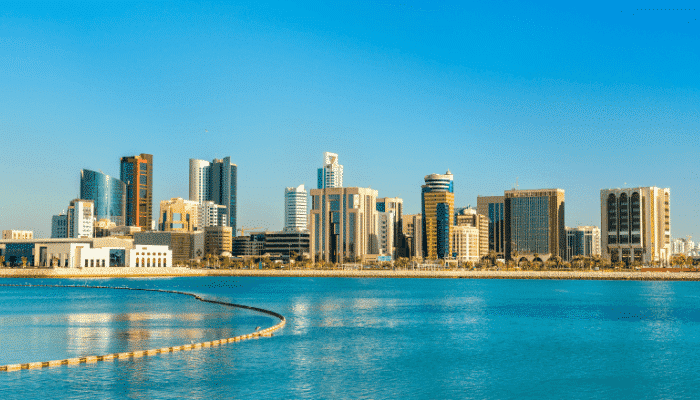
The harbour also houses many residential buildings and luxurious apartments along with docks to receive yachts and cruise ships. The project was aimed at attracting foreign businesses to set their offices in the capital and boost the shipping sector since many shipping companies have their regional offices in the Manama harbour.
Port of Sitra
The port of Sitra is the nation’s most important oil and petroleum processing facility. Lying on the island of Sitra near the Khor Qhaliya east of the main archipelago, it is owned and managed by the government of Bahrain. This oil handling facility also deals with dry cargo and liquid bulk such as petroleum, chemical products and liquified petroleum gas. The port handles more than 1000 vessels annually with a maximum draught of 12 m.
The port comprises many wharves leased to private companies for transporting their products. The Bahrain Petroleum Company operates 6 berths for handling petroleum products and another berth for accommodating smaller ships with a total length and draft of 72 m and 5 m respectively.
Aluminium Bahrain or ALBA operates a wharf with 2 berthing facilities, one used for accommodating ships carrying bulk cargo such as coke and alumina ore while the second berth is utilised for handling metal products.
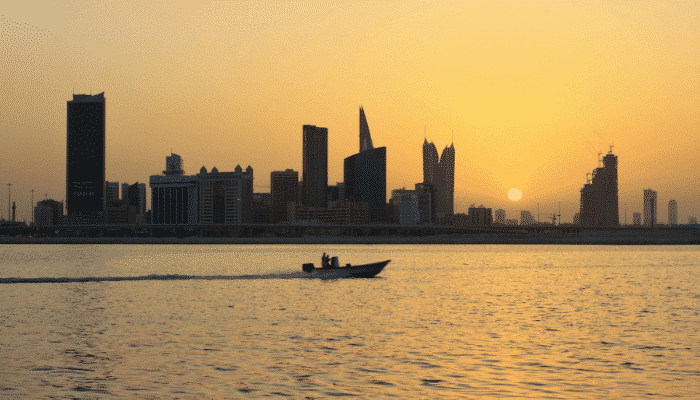
Two docks with a length of more than 300 m each and a quay wall along with 7 berthing facilities and a drydock spanning 360 m are utilised by the Arab Shipbuilding and Repair Yard company offering ship repair and maintenance services.
One of the wharves and two berths are leased by the Gulf petrochemical industries company used for handling shipments of iron ore and aluminium. One of the berths has a big storage area.
The port is connected to Saudi Arabia through an oil pipeline till Dammam. Sitra city also has oil storage tanks and the Sitra refinery is situated a few kilometres from the port. Before the transformation of the area as a major industrial region, it was known for the production of date palms.
Port of Al Muharraq
The port of Al Muharraq lies on the island of the same name near the Persian Gulf, just 3 km from Manama. It is one of the deepwater seaports of Bahrain, famous as a tourist attraction and a pleasure port, not as a cargo port. It is frequented by yachts, motorboats, fishing boats and passenger ships. It can accommodate one of the biggest vessels and is endowed with modern facilities including waiting rooms, restaurants, etc.
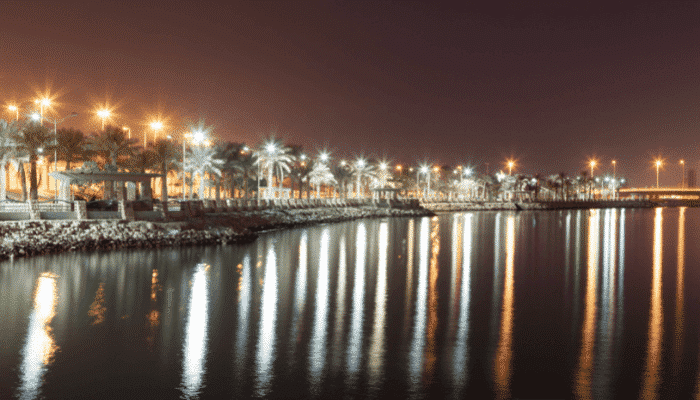
The port has a rich history since it was occupied by the Portuguese and then passed to the ruling dynasty of Bahrain in the late 17th century. It developed as a port famous for pearl diving before it evolved into a cruise port. Presently, it attracts water sports lovers since its famous for scuba diving, sailing and fishing.
A shipbuilding facility and a repair yard are located near Al Hadd, another prominent town of Al Muharraq island. The drydock became operational in 1988 and can accommodate ships weighing more than 400,000 DWT. The region is also famous for its well-preserved medieval middle eastern architecture and also houses the popular Arad fort.
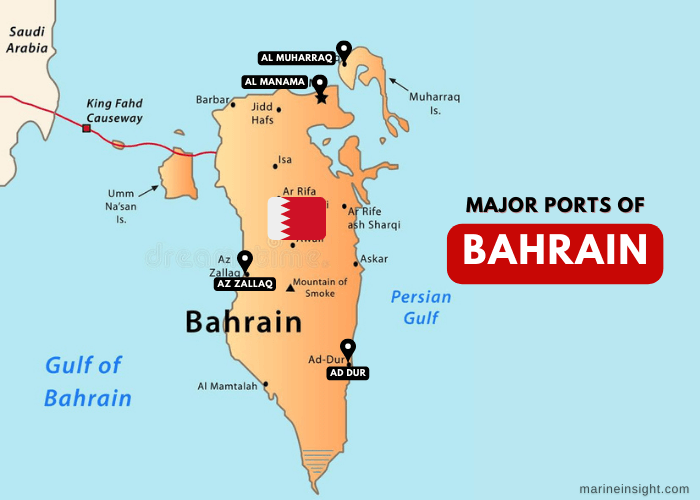
You might also like to read:
- What Are The Major Ports In Jordan?
- 10 Major Ports in Dubai and the United Arab Emirates
- 5 Major Ports In Iraq
- 5 Major Ports in Portugal
- 7 Major Ports in Qatar
Disclaimer :
The information contained in this website is for general information purposes only. While we endeavour to keep the information up to date and correct, we make no representations or warranties of any kind, express or implied, about the completeness, accuracy, reliability, suitability or availability with respect to the website or the information, products, services, or related graphics contained on the website for any purpose. Any reliance you place on such information is therefore strictly at your own risk.
In no event will we be liable for any loss or damage including without limitation, indirect or consequential loss or damage, or any loss or damage whatsoever arising from loss of data or profits arising out of, or in connection with, the use of this website.
Do you have info to share with us ? Suggest a correction
Disclaimer :
The information contained in this website is for general information purposes only. While we endeavour to keep the information up to date and correct, we make no representations or warranties of any kind, express or implied, about the completeness, accuracy, reliability, suitability or availability with respect to the website or the information, products, services, or related graphics contained on the website for any purpose. Any reliance you place on such information is therefore strictly at your own risk.
In no event will we be liable for any loss or damage including without limitation, indirect or consequential loss or damage, or any loss or damage whatsoever arising from loss of data or profits arising out of, or in connection with, the use of this website.
Latest Maritime Knowledge Articles You Would Like:
Daily Maritime News, Straight To Your Inbox
Sign Up To Get Daily Newsletters
Join over 60k+ people who read our daily newsletters
By subscribing, you agree to our Privacy Policy and may receive occasional deal communications; you can unsubscribe anytime.



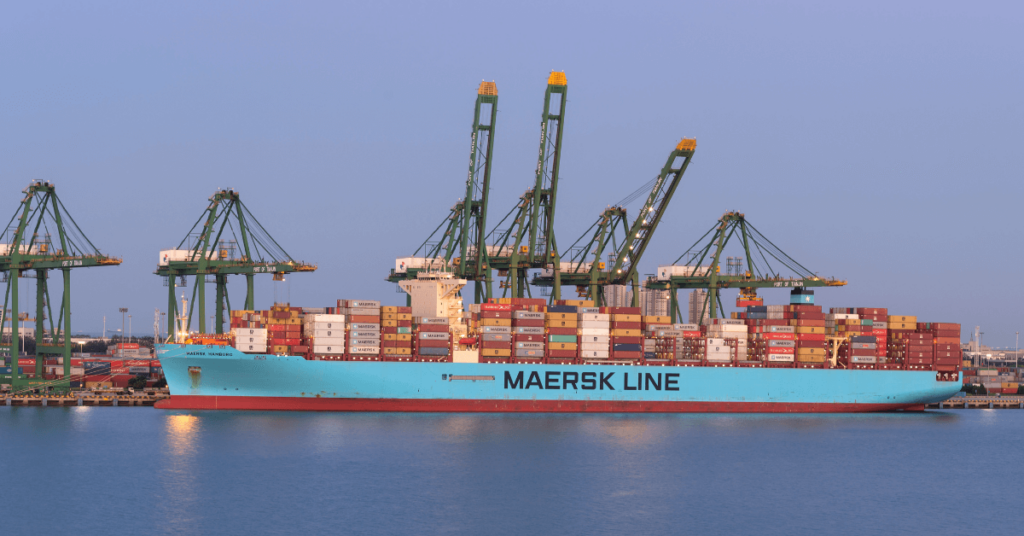
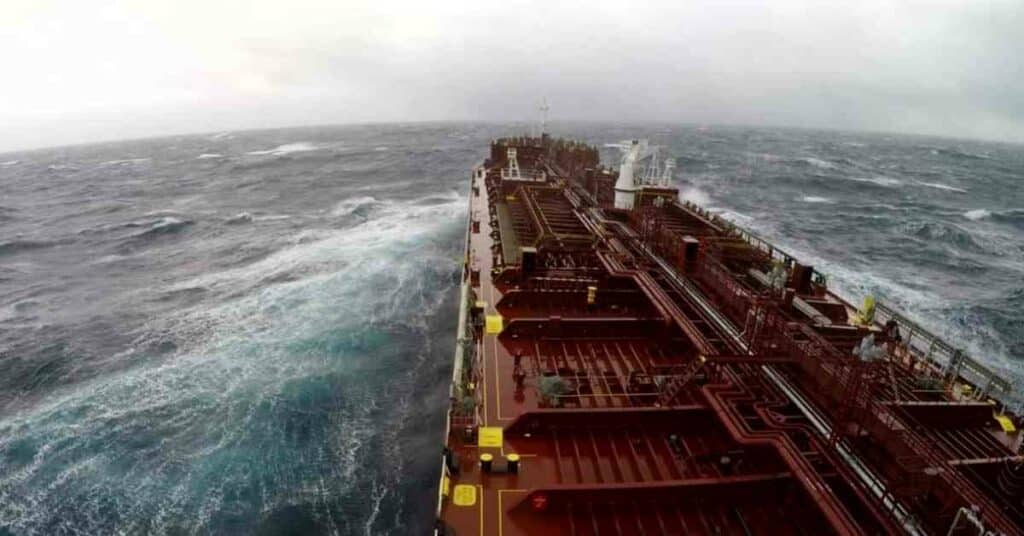
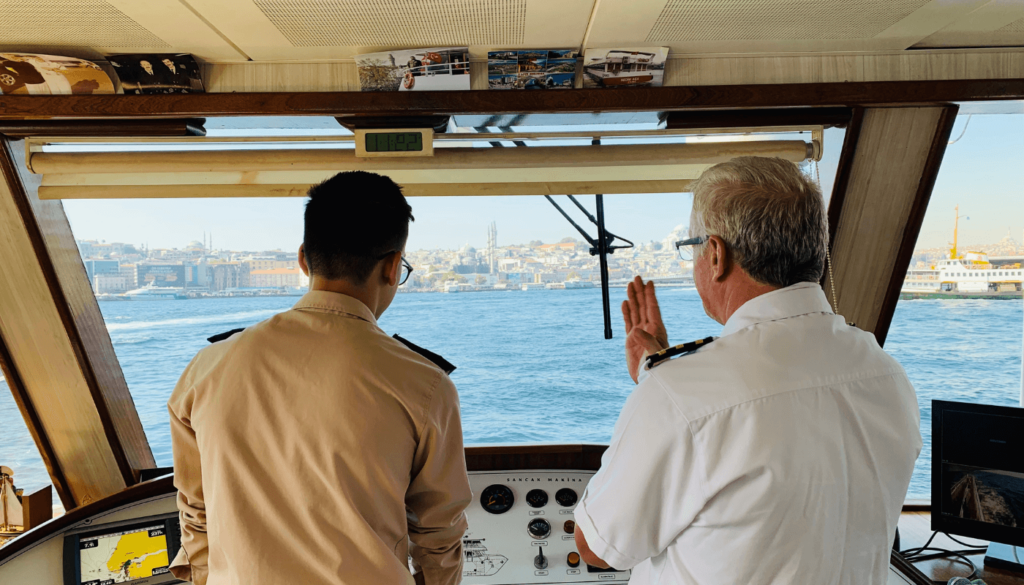

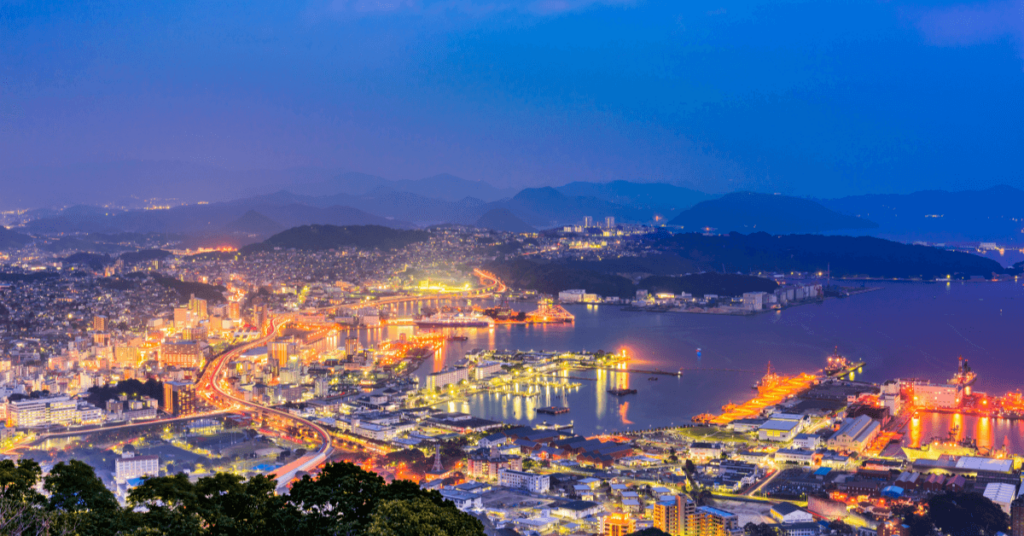


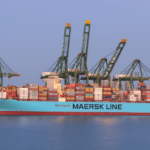
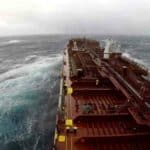
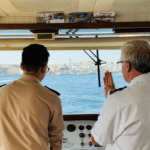

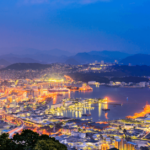

Ur published guide us
Your Support Propell us